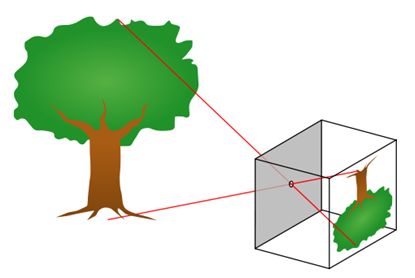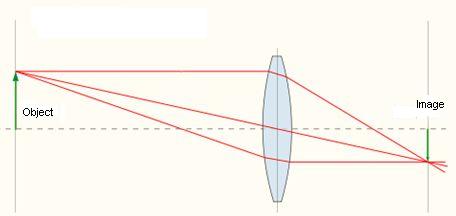Lenses
Lenses are optic elements used in the front of a camera. The first cameras, called pinhole, were composed by a box (usually made of wood) with a hole in the front where light would come through. The image would form inside of the box (on the opposite side of where the hole is) totally inverted from right to left and upside down. The time of exposure was extremely long (up to 8 hours) because the hole allow too little light. This is why there are no people photographed in the early photography stages. Nobody could stand still for 8 or 6 hours to be able to appear in a photograph! Pictures also lacked sharpness and were generally out of focus (blurry).

When a lens was added to a camera, they were able to achieve greater sharpness to the final image. The time of exposure was also reduced. As you can imagine, this was a great discovery.
How does an image form using a lens? It is formed through refraction. A lens gathers light from a point in the image and converges this light in another point. The sum of all these points forms the complete picture. The film is placed where the image is formed or, in the case of digital cameras, the film is replaced by a sensor.

JUst the same as a pinhole camera, that formed image is completely inverted: from right to left and upside down.
There are some camera models (like compact cameras) in which the lens is fixed (not changeable), and there are others with changeable lenses (SLR).
The lens controls 4 aspects, mainly:
- The quantity of light that reaches the film. It does this through the diaphragm (later lessons).
- Image Focus.
- Depth of Field (later lessons).
- The viewing angle which is determined by the focal length of the lens. The focal length of the lens is represented in millimetres (mm). The more focal length a lens has (for example, 300mm), the smaller the viewing angle will be. What does this mean? It means that fewer elements in the scene will appear in the picture. And vice versa: if the lens has less focal length (for example, 50mm), more elements in the scene will appear in the picture.

